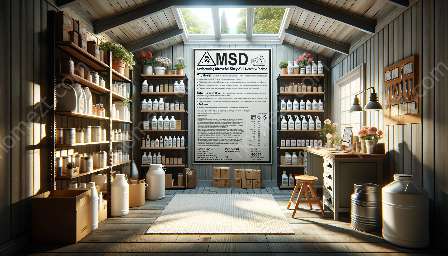Introduction
Safe storage of hazardous materials is of utmost importance in ensuring home safety and security. One crucial aspect of safe hazardous material storage is climate control, which involves maintaining specific temperature, humidity, and ventilation levels to prevent accidents and environmental hazards.
Understanding Hazardous Materials
Hazardous materials can pose significant risks to health, safety, and the environment if not stored properly. These materials include substances that are flammable, corrosive, toxic, or reactive. Examples of hazardous materials commonly found in homes and industrial settings include chemicals, pesticides, solvents, and radioactive materials.
Importance of Climate Control
Climate control plays a vital role in the safe storage of hazardous materials. It helps to prevent the degradation and decomposition of materials due to extreme temperatures and humidity levels. Additionally, maintaining appropriate ventilation can minimize the risk of toxic fumes accumulating in storage areas.
Temperature Control
Temperature control is essential in hazardous material storage to prevent the overheating or freezing of substances. Fluctuations in temperature can lead to chemical reactions or physical changes in the materials, potentially resulting in leaks, spills, or explosions. To maintain safe temperatures, storage areas may be equipped with heating, cooling, or insulation systems.
Humidity Management
Controlling humidity levels is crucial for preserving the stability and integrity of hazardous materials. High humidity can cause corrosion, spoilage, or contamination, while low humidity can lead to dryness and increased flammability. Dehumidifiers and moisture barriers are commonly used to regulate humidity in storage spaces.
Ventilation Systems
Proper ventilation is essential to prevent the buildup of hazardous fumes and vapors. Ventilation systems should be designed to effectively remove airborne contaminants from storage areas, reducing the risk of inhalation and fire hazards. This is particularly important for storage spaces with limited natural airflow.
Guidelines for Safe Storage
When storing hazardous materials, it's important to adhere to specific guidelines to ensure climate control and overall safety:
- Store materials in designated areas with appropriate climate control measures.
- Regularly monitor and maintain temperature and humidity levels.
- Implement emergency ventilation systems and alarms for hazardous material storage areas.
- Use proper containers and packaging to prevent leaks and spills.
- Train personnel on safe handling and storage practices for hazardous materials.
Integration with Home Safety & Security
Effective climate control in hazardous material storage directly contributes to home safety and security. By preventing accidents and environmental contamination, proper climate control measures support the overall protection of individuals, properties, and the surrounding environment. Additionally, integrating climate control with home security systems can enhance monitoring and response capabilities in the event of any storage-related incidents.
Conclusion
Climate control in hazardous material storage is a critical component of ensuring safe storage practices and promoting home safety and security. By understanding the importance of temperature, humidity, and ventilation management, individuals and organizations can minimize the risks associated with storing hazardous materials, ultimately creating a secure environment for both residential and industrial settings.



